And Then There Were None (1945)
By Toronto Film Society on May 30, 2023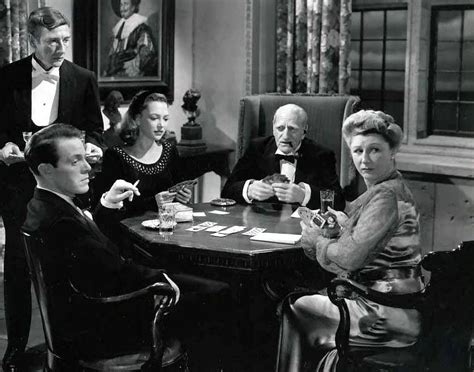
Toronto Film Society presented And Then There Were None (1945) on Saturday, May 27, 2023 as part of the Season 75 Virtual Film Buffs Screening Series, Programme 8.
Producers: René Clair, Harry M. Popkin; Distributor: 20th Century Studios. Director: René Clair. Screenplay: Dudley Nichols, based on the play by Agatha Christie. Cinematography: Lucien N. Andriot. Film Editor: Harvey Manger. Release Dates: October 31, 1945 (U.S.).
Cast: Barry Fitzgerald (Judge Francis J. Quincannon), Walter Huston (Dr. Edward G. Armstrong), Louis Hayward (Philip Lombard), Roland Young (Detective William Henry Blore), June Duprez (Vera Claythorne), Mischa Auer (Prince Nikita Starloff), Sir C. Aubrey Smith (Gen. Sir John Mandrake), Judith Anderson (Emily Brent).
Spoiler alert: It’s an Agatha Christie murder mystery. People will die.
While not the first work to introduce the gimmick of a group of people lured by an anonymous host to an event they cannot escape, where each guest will potentially be murdered — that honour goes to the 1930 novel The Invisible Host and subsequent 1934 film adaptation The Ninth Guest — René Clair’s film And Then There Were None is the most influential.
There have been close to 200 adaptations of Agatha Christie’s works for the screen, and Clair’s And Then There Were None is still considered among the best, and one of the greatest murder mysteries of all time, with numerous references and parodies in the decades since appearing everywhere from Gilligan’s Island to The Golden Girls.
Christie’s 1939 novel was the first in a series she wrote inspired by children’s nursery rhymes, mixing the innocent and the macabre. She had already adapted it for the stage, and Clair further adapted that play for the screen (it should be noted that the book and film do not have the same number of murder victims, so even if you’ve read Christie’s novel, it does not contain spoilers for the film!).
Other filmmakers have attempted remakes, but none has lived up to the charm of the original, perhaps due not only to the screenplay Clair co-wrote with Dudley Nichols (Bringing Up Baby, The Bells of St. Mary’s) but also the cast of experienced character actors—Walter Huston, Mischa Auer, Queenie Leonard, Roland Young, et al. Clair himself said, “the great task of a director is to understand actors… we have a script, but we are always prepared for a sudden turn of events.”
He brought a light touch to the script. In his New York Times review when the film premiered (on Hallowe’en appropriately enough), Bosley Crowther wrote, “Clair has produced an exciting film and has directed a splendid cast in it with humour and a light macabre touch… The temptation to the horrifying is intelligently dismissed; Mr. Clair and his script-writer, Dudley Nichols, have fetched their fun from fear and trembling, not from gore. And within the limited framework of this plainly theatrical plot, they have put a set of characters who display the clammy drollery of dread.”
Of the numerous European auteurs who came to Hollywood in advance of WWII, René Clair was among the most celebrated—at least in France. He “reigned supreme from the middle twenties to the early fifties as the French film director” according to R.C. Dale of Film Quarterly. André Bazin claimed Clair was “without question, after Chaplin, the most renowned filmmaker in the world” in a 1957 article for France Observateur.
Indeed, it has been speculated by no less than Studs Terkel that Clair’s early film A Nous là liberté influenced Chaplin himself. But unlike other emigrés like Billy Wilder who went on to long and illustrious Hollywood careers, Clair remained independent rather than signing a studio contract. He considered himself “a writer who happens to direct,” or “a cinematic author, by which he meant a creator who guides his film from its original conception through its writing, directing, and finally editing.” As a result, he only made four films in Hollywood before returning to France. And Then There Were None was the last.
References: French cinema from the Liberation to the New Wave, 1945-1958. Bazin, André. UNO Press, University of New Orleans Press c2012;
The New York Times: “THE SCREEN IN REVIEW; ‘And Then There Were None,’ With Barry Fitzgerald, at Roxy, Appears Opportunely as Goblins Pay Annual Visit.” Crowther, Bosley. New York: 1 November 1945;
The films of René Clair. Dale, R.C. Metuchen, N.J. : Scarecrow Press, 1986;
The Studs Terkel interviews : film and theater. Terkel, Studs. New York : New Press : Distributed by W.W. Norton & Co., 2008, c1999.
Notes by Jennifer Amey
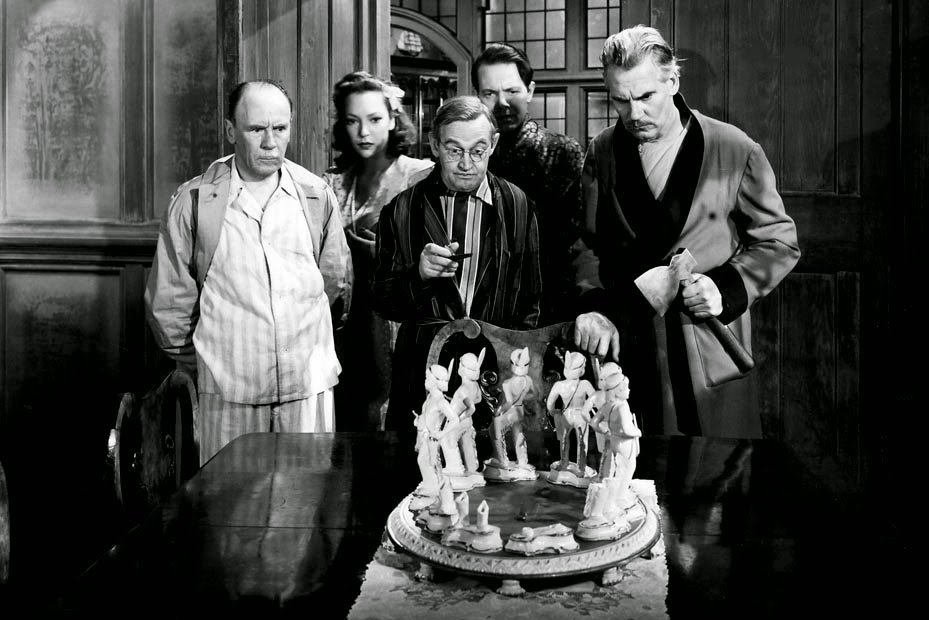
Spot the Canadian by Leslie Smith
Not much has been noted about Ben Berk, unit production manager for And Then There Were None (1945). He was born “in Canada” July 17th, 1905, worked production and set design on a handful of Hollywood credits, and died in Los Angeles in 1978.
***************
A bit more is available on the film’s associate producer, Leo C. Popkin. He was born January 1st, 1914 in Toronto. But his brother and mentor, executive producer Harry M. Popkin, was born a few years prior in New York City, so this may represent a case of a peripatetic family wandering back and forth over the border, as so many were wont to do in those days.
After learning their craft in Hollywood, the two brothers paired up with Ralph Cooper (“the Black Gable”) to found Million Dollar Productions, dedicated to producing and distributing low-budget “race pictures.” Leo was also charged with the management of a string of African-American movie theaters in Los Angeles.
The company, formed in 1937 and disbanded in 1940, had a bigger impact on US culture than its brief lifespan might indicate. Tino Balio, professor emeritus of communication arts and a prominent Hollywood historian, wrote that: “Million Dollar, more than any other company, moved black filmmaking away from a marginalized form towards the mainstream, advancing considerably its reputation and ability to attract audiences.”
It also gave a creative outlet to performers as diverse as Lena Horne, Mantan Moreland,
Nina Mae McKinney and Louise Beavers. Titles that list Leo Popkin as a producer, co-producer, director or co-director include The Duke Is Tops (1938), Gang Smashers (1938), Reform School (1939), While Thousands Cheer (1940) and Four Shall Die (1940).
The advent of World War II and changing post-war mores put paid to most “race” production. The Popkin moved on to mainstream Hollywood and produced several well-regarded films, among them D.O.A. (1949), Impact (1949) and Champagne for Caesar (1950).
The pair did not completely abandon the social concerns of mid-20th Century life, however. In 1951, they produced a modestly budgeted movie filled with unknown black and white actors. The Well showed how quickly violence and lawlessness could take over an otherwise sleepy US town, when a white man, accused of kidnapping a black girl, is released by the white authorities. Surprisingly, for such a small-scale production, The Well was nominated for two Academy Awards, for Best Original Screenplay and Best Film Editing.
Harry Popkin died in 1991; Leo lasted another 20 years, dying in Beverly Hills on April 15th, 2011.
Edward G. Boyle, set decorator on And Then There Were None (1945), was born January 30th, 1899 in Cobden, Ontario, a small town situated at the foot of Lake Muskoka. As a youth, he enlisted in the Princess Pat’s Canadian Light Infantry, seeing service in WWI and rising to the rank of lieutenant.
Post-war, he headed to Hollywood to pursue a career in the arts. Work came slowly at first, but it must have been aided somewhat by his 1922 marriage to San Franciscan author Mary Eunice McCarthy. She, too, had moved to Los Angeles, following the footsteps of her two screenwriter brothers.
The couple made a living, living on the periphery of the biz. But it wasn’t until the mid-1930s that they began to really break out. Among the dozen films McCarthy scripted her best-known today are Theodora Goes Wild (1936) and Sister Kenny (1946). As for Boyle, he ended up working on over 100 films, was nominated for Academy Awards seven times and won once.
His credits encompass assists on post-Civil War sets for Gone with the Wind (1939), creating the Nazi-like paraphernalia for The Great Dictator (1940), and recreating the rough boxing milieu in both Body and Soul (1947) and Champion (1949). Other major pics include The Son of Monte Cristo (1940), Separate Tables (1958), The Children’s Hour (1961), Seven Days in May (1964), Hawaii (1966), The Thomas Crown Affair (1968) and Gaily Gaily (1969).
Boyle was a favourite of Billy Wilder, who used him for Some Like it Hot (1959), The Fortune Cookie (1966), and 1960’s The Apartment, for which Boyle finally won the Oscar.
He retired in 1970 and died in Hollywood on February 17th, 1977 at the age of 78.
Walter Huston
The IMDb mini-biography by Jon C. Hopwood says it best: “The great William Wyler directed Walter Huston in what is perhaps his finest performance on film, the eponymous Dodsworth in Wyler’s 1936 adaptation of Sinclair Lewis’s novel. Huston received the first of his four Academy Award nominations for the role, which he had originated on Broadway in 1934. Huston’s reputation as a great actor is rooted in this performance, one of the greatest by an English-speaking actor preserved on film.”
It’s high praise indeed but in no way unwarranted. Eugene O’Neill, the only American playwright to win the Nobel Prize in Literature and the creator of Huston’s first break-out Broadway role in the mid-1920s, said Walter Huston’s portrayal of Ephraim Cabot in Desire Under the Elms was the greatest performance by any actor in any of his works. Following Huston’s early talkie move to the West Coast, film industry colleagues seem to agree with this estimation, nominating him for Oscars four times in 12 years. Significantly showcasing the actor’s repertoire-style versatility, two of these nominations were for Best Actor – Dodsworth (1936) and All That Money Can Buy (1941) – and two were for Best Supporting Actor – Yankee Doodle Dandy (1942) and The Treasure of the Sierra Madre (1948), marking the first time any actor had been nominated in both categories. He finally won for the latter film, one of three movies he appeared in which were directed by his son, the renowned John Huston.
In Yankee Doodle Dandy, as well as John Ford and Gregg Toland’s Oscar-winning documentary short December 7th (1943), Huston appears as Uncle Sam, the personification of the United States. His portrayal of Abraham Lincoln in D.W. Griffith’s 1930 film of the same name rounded off a cinematic trifecta in Yankee patriotism. Not bad acting for a kid born April 5, 1883 in Toronto, Ontario, Canada.
As a young man, Walter Huston studied both engineering and theatre. At the start of his career, he toured in the latter craft after making his stage debut in 1902. In 1904, he married journalist Rhea Gore, who gave birth to Huston’s only child, John, in Nevada in 1906. To provide more support for his new family, Huston quit acting and went to work as an engineer at a Missouri water works. Here, he proved less successful. After constructing a flawed reservoir that came close to flooding a nearby town, Huston returned to the stage in 1909, never to really leave it again, despite his long foray in Hollywood.
He and Rhea divorced the same year. Huston went on to marry actor Mina Rose, billed as Bayonne Whipple, in 1915; they divorced in 1931. Later, Ninetta Sunderland proved that the third wife was the charm; she was with him until his 1950 death in Beverly Hills from an aortic aneurysm.
Other good things came to him in threes. His son John had three children, all of them in the business: actor/writer Tony Huston, actor/director Danny Huston, and actor/producer/director Anjelica Huston. Walter, John and Angelica all won Academy Awards, making them the first family to win Oscars across three generations (the Coppola family later duplicated this feat).
After his death, Huston received a star on the Hollywood Walk of Fame although shamefully, to this late date, he has never been inducted into the Canadian Walk of Fame. Be that as it may, an historic plaque was affixed to his former home in Cabbagetown, as well as to the Winchester Public School he once attended. One more sidelight: Huston – no professional singer – could also claim the best-selling debut recording of “September Song,” by Kurt Weill and Maxwell Anderson, taken from his 1938 Broadway show Knickerbocker Holiday.
Walter Huston remains to this day one of Hollywood’s most celebrated actors. His knack for expressing strong emotion through low-key performances (a facility he claimed the movies helped teach him) gave him a more natural acting style than most of his contemporaries, making his work still feel fresh and compelling today.
You may also like...
-
News

Frances Blau
Toronto Film Society | February 27, 2024On Monday, February 26th, 2024, Toronto Film Society lost longtime friend, supporter, and board member Frances Blau. Known for her sense of humour, her love of film, her generosity,...
-
Special Events

Monday Evening Film Noir Double Bill at the Paradise Theatre
Toronto Film Society | July 8, 2024The Toronto Film Society presents a film-noir double feature at one low price! The Window (1949) in a double bill with Black Angel (1946) at the Paradise Theatre on Monday, August...
Programming

Virtual Saturday Night at the Movies
Toronto Film Society | July 20, 2024Toronto Film Society is back in the theatre! However, we’re still pleased to continue to bring you films straight to your home! Beginning Season 73 until now we have...
4-
 Toronto Film Society | July 8, 2024
Toronto Film Society | July 8, 2024
Monday Evening Film Noir Double Bill at the Paradise Theatre
-
 Toronto Film Society | November 6, 2022
Toronto Film Society | November 6, 2022
-
 Toronto Film Society | August 1, 2023
Toronto Film Society | August 1, 2023
Donate to Toronto Film Society – We’re now a Registered Charity!
-
Copyright © 2017 Toronto Film Society.

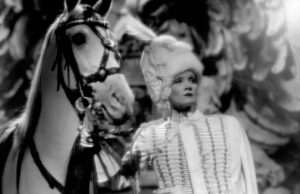
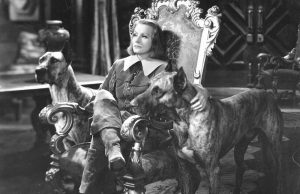
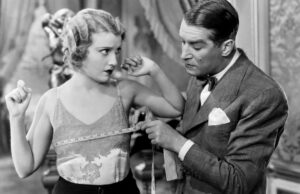
[…] Beginning Season 73 until now we have shown: Charade (1963), The Red House (1947), Meet John Doe (1941), D.O.A. (1949), His Girl Friday (1940), The Little Shop of Horrors (1960), Scarlet Street (1945), Nothing Sacred (1937), The Stranger (1946), Sherlock Holmes and the Secret Weapon (1942), The Strange Love of Marth Ivers (1946), The Scarlet Pimpernel (1934), Love Affair (1939), Champagne for Caesar (1950), Second Chorus (1940), Gulliver’s Travels (1939), Detour (1945), Nosferatu (1922), My Man Godfrey (1936), It’s a Wonderful Life (1946), The Woman in Green (1945), The Symbol of the Unconquered (1920), Rain (1932), Kansas City Confidential (1952), And Then There Were None (1945). […]